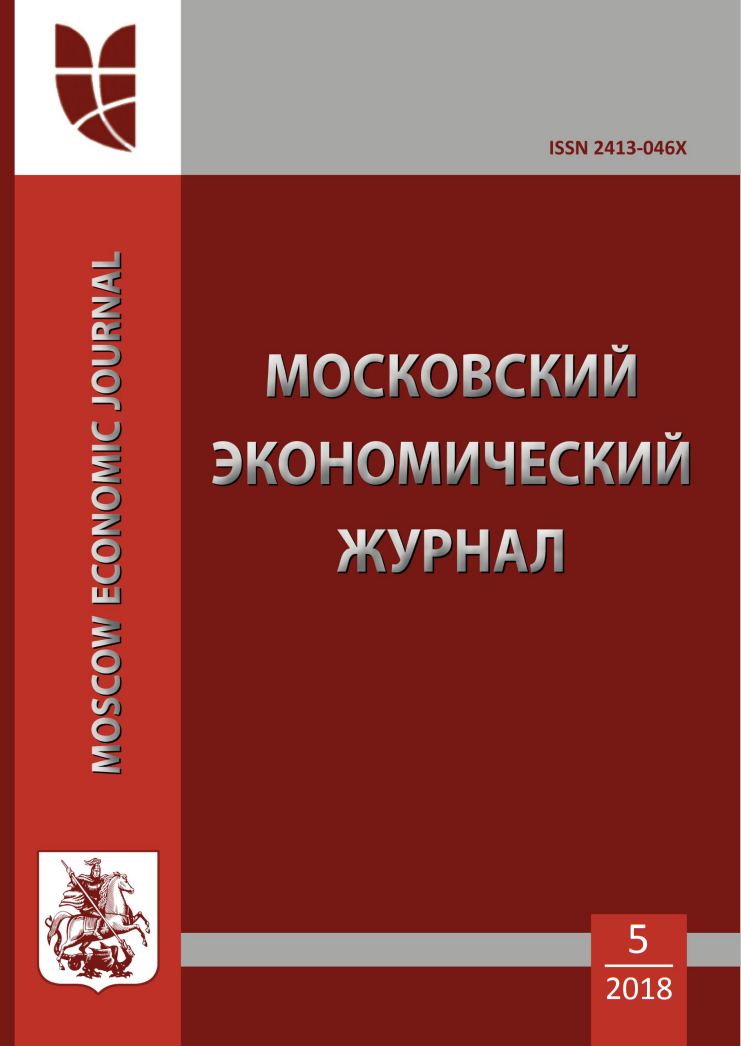Russian Federation
Rostov State University of Economics (Faculty of Economics and Finance, Dean)
Russian Federation
The article discusses the reason for the discrepancy in the rate of economic growth of European countries, which hinders the achievement of the EU's goals of achieving a sustainability strategy. The analysis of research in this area showed the presence of methodological problems of convergence management, which are due to the lack of confirmed data on the presence of a correlation between it and certain parameters of the functioning of the economies of the countries of the EU. In addition, the analysis of large-scale projects for the alignment of the economic development of European countries showed their insufficient efficiency, which is also associated with the shortcomings of the methodology. The article used statistical data on the most important indicators of the EU for 10 years, which confirmed the hypothesis of a number of scientists about the presence of stable patterns of economic dynamics in Europe. It justifies the use of cenological tools for evaluating the entire community in question, since it reflects the patterns of development of such systems in which the use of the concept of the mean is not acceptable as a reference criterion. The cenological assessment of the economic dynamics of the EU countries in terms of GDP confirmed the hypotheses expressed about the presence of stable patterns of the trajectory of movement along the surface of the statistical distribution. As a result of fine statistical estimation procedures, a clustering model for European countries was obtained in groups in which it is advisable to use cluster (group) value of convergence. The result obtained can be used in the formation of targets for programs of cross-country, regional, industry leveling, since it is based on the results of a systematic assessment of complex structure-cenosis systems.
convergence, economic coenos, statistical evaluation
1. European Commission (2014), For a European Industrial Renaissance; Communication from the Commission to the European Parliament, the Council, the European Economic and Social Committee and the Committee of the Regions; COM/2014/014.
2. Voronov V.V. Konvergenciya regionov Evropeyskogo soyuza: osobennosti i ocenka//Ekonomicheskie i social'nye peremeny: fakty, tendencii, prognoz. № 6 (36). 2014
3. Fagerberg, J., Verspagen, B. (1996). "Heading for divergence? Regional growth in Europe reconsidered". Journal of Common Market Studies 34 (3), 431-448.
4. Abramovitz, M. (1994), ‘The Origins of the Postwar Catch-up and Convergence Boom’, in Fagerberg, J., Verspagen, B. and von Tunzelman, N. (eds), The Dynamics of Technology, Trade and Growth, Aldershot, Edward Elgar Publishing, Ltd.
5. Barro, R.J., Sala-i-Martin, X. (1997). "Technological diffusion, convergence, and growth". Journal of Economic Growth 2 (1), 1-26.
6. Aghion, P., Howitt, P. (1998). Endogenous Growth Theory. MIT Press, Cambridge, MA
7. Friesenbichler, K., R. Stehrer, R. Stöllinger et al. (2017), Drivers and Obstacles to Competitiveness in the EU: the Role of Value Chains and the Single Market; Report to the European Commission, DG GROW; Draft Final Report; July 2017.
8. Hein, E., Truger, A. (2005): “European Monetary Union: nominal convergence, real divergence and slow growth?” Structural Change and Economic Dynamics, 16, 7-33
9. Lein,-Rupprecht, S., León-Ledesma, M.A., Nerlich, C. (2007): “How is real convergence driving nominal convergence in the new eu member states?” ECB Working Paper Series, European Central Bank (ECB).
10. Hallett, A. H.; Oliva, J. C. M. (2015) “The importance of trade and capital imbalances in the European debt crisis,” Journal of Policy Modeling, 37(2): 229-252
11. Crafts, N.; Tonniolo, G. (1996) «Postwar growth: an overview», in N. Crafts and G. Tonniolo (eds.), Economic Growth in Europe since 1945. Cambridge: Cambridge University Press 1-37; A. Maddison, op. cit., 71-86;
12. Veugelers R.; Mral, M. (2009) “Catching up member states and the knowledge economy of the European Union,” Knowledge economics policy brief.
13. Carvalho, V.; Harvey, A. (2005) “Convergence in the trends and cycles of Euro-zone income,” Journal of Applied Econometrics 20(2): 275-289
14. Borsi, M. (2015) “The evolution of economic convergence in the European Union,” Empirical Economics 48(2): 657-681
15. Ball, L. (2014) “Long-term damage from the Great Recession in OECD countries,” NBER Working Paper No. w20185
16. Strazicich, M.; Lee, J.; Day, E. (2004) “Are incomes converging among OECD countries? Time series evidence with two structural breaks,” Journal of Macroeconomics 26: 131-145
17. Kozlova, Olesia., de Jesus Noguera, Jose., Achievers or slackers? Per Capita Income Trends in European countries. Journal of Policy Modeling (2018), https://doi.org/10.1016/j.jpolmod.2018.08.004
18. Bolea L, Duarte R, Ch´oliz JS, From convergence to divergence? Some new insights into the evolution of the European Union, Structural Change and Economic Dynamics (2018), https://doi.org/10.1016/j.strueco.2018.07.006 https://ec.europa.eu/eurostat/statistics-explained/index.php?title=File:Employment_in_agriculture,_2015_(National_Accounts).png
19. Crutzen N., Herzig C. A review of the empirical research in management control, strategy and sustainability. In: Songini, L., Pistoni, A., Herzig, C. (Eds.), Accounting and Control for Sustainability, Studies in Managerial and Financial Accounting. Emerald Group, 2013. Bingley, pp. 165-219
20. Chan R.Y., 2005. Does the natural-resource-based view of the firm apply in an emerging economy? A survey of foreign invested enterprises in China. J. Manag.Stud. 42 (3), 625-672.
21. Kuz'minov A. N. Upravlenie ustoychivost'yu regiona: cenologicheskaya model' / Ekonomika regiona. 2009.- № 2. S. 142-152
22. Kuzminov A. N., Korostieva N. G., Dzhukha V. M., Ternovsky O. A., "Economic Coenosis Stability: Methodology and Findings" //Contemporary Issues in Business and Financial Management in Eastern Europe. Published online: 19 Sep 2018; 61-70











